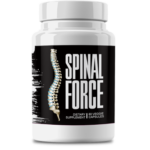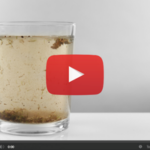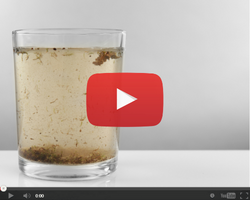This Village-Made Chinese Pain Reliever Eliminates Back And Joint Pain!
Navigating Right Knee Pain: When to Seek Medical Help

Understanding Right Knee Pain
Common Causes of Right Knee Pain
Right knee pain is a widespread issue that can stem from various causes. Common culprits include injuries such as ligament tears, fractures, and sprains. Conditions like arthritis, tendinitis, and bursitis also frequently lead to knee discomfort. Overuse from repetitive activities or poor posture can contribute to the pain. Additionally, underlying health conditions like gout, infections, or even referred pain from the hip or lower back may be responsible. Understanding the root cause of the pain is essential for effective treatment and prevention.
Symptoms to Watch For
Identifying the symptoms of right knee pain is crucial for addressing the issue promptly. Common symptoms include swelling, stiffness, and a noticeable decrease in the range of motion. You might also experience redness, warmth around the knee joint, and a clicking or popping sound during knee movement. Pain can vary from a dull ache to sharp, intense discomfort, particularly when bearing weight. Monitoring these symptoms can help in determining the severity of the condition and the appropriate course of action.
Risk Factors for Right Knee Pain
Several risk factors may predispose individuals to right knee pain. Age is a significant factor, as the wear and tear on the joints increase over time. Obesity adds extra stress to the knee joints, exacerbating pain and discomfort. Engaging in high-impact sports or activities without proper conditioning can also heighten the risk. Additionally, a history of knee injuries or surgeries can make the knee more susceptible to future problems. Understanding these risk factors can aid in taking preventative measures to maintain knee health.
At-Home Treatments for Right Knee Pain
Rest and Ice Therapy
One of the simplest and most effective at-home treatments for right knee pain is rest and ice therapy. Resting the affected knee helps reduce strain and allows the healing process to commence. Applying ice packs to the knee for 20-minute intervals several times a day can significantly reduce swelling and numb the area, alleviating pain. Elevating the knee while resting can also help in minimizing inflammation. This combination of rest and ice therapy is often the first line of defense against knee pain.
Over-the-Counter Pain Relievers
Over-the-counter pain relievers can provide significant relief from right knee pain. Nonsteroidal anti-inflammatory drugs (NSAIDs) such as ibuprofen and aspirin are effective in reducing both pain and inflammation. Acetaminophen is another option for pain management, though it does not address inflammation. It is crucial to follow the recommended dosage instructions on the packaging. If the pain persists despite these medications, it may be a sign that further medical evaluation is necessary.
Gentle Stretches and Exercises
Incorporating gentle stretches and exercises into your daily routine can help alleviate right knee pain. Stretching the quadriceps, hamstrings, and calves can improve flexibility and reduce tension around the knee joint. Low-impact exercises such as swimming, cycling, or walking can strengthen the muscles supporting the knee without adding undue stress. It is important to start slowly and gradually increase the intensity to avoid exacerbating the pain. Consistency in these exercises can lead to long-term relief and improved knee function.
When to Seek Medical Help for Right Knee Pain
Indicators of Severe Pain
Recognizing when to seek medical help for right knee pain is critical. Severe pain that does not improve with rest, ice, or over-the-counter medications is a clear indicator that professional evaluation is needed. If the pain is accompanied by severe swelling, an inability to bear weight, or a noticeable deformity in the knee joint, immediate medical attention is warranted. These symptoms could indicate a more serious underlying condition, such as a fracture or ligament tear, requiring prompt treatment.
Signs of Infection or Inflammation
Signs of infection or inflammation in the knee joint should never be ignored. Redness, warmth, and significant swelling around the knee, coupled with fever or chills, may indicate an infection. Inflammatory conditions like rheumatoid arthritis or gout can also present with these symptoms. If you experience any of these signs, it is crucial to seek medical help promptly. Early diagnosis and treatment can prevent complications and promote faster recovery.
Chronic Pain and Limited Mobility
Chronic pain and limited mobility are strong indicators that it is time to consult a healthcare professional. If right knee pain persists for several weeks or months, despite at-home treatments, it may be due to an underlying condition that requires medical intervention. Limited range of motion, difficulty in performing daily activities, and persistent stiffness are signs that the knee joint may need further evaluation. Seeking medical advice can help in diagnosing the issue and developing a comprehensive treatment plan.
Diagnostic Tools for Right Knee Pain
Physical Examination Techniques
A thorough physical examination is often the first step in diagnosing right knee pain. Healthcare providers will assess the knee's range of motion, stability, and strength. They may palpate the knee to identify tender areas and check for swelling or warmth. Specific tests, such as the McMurray test for meniscus tears or the Lachman test for ligament stability, can provide valuable insights. This hands-on evaluation helps in narrowing down the potential causes and determining the next steps in the diagnostic process.
Imaging Tests: X-rays, MRIs, and CT Scans
Imaging tests are essential tools in diagnosing the cause of right knee pain. X-rays can reveal fractures, bone alignment, and signs of arthritis. Magnetic Resonance Imaging (MRI) provides detailed images of soft tissues, including ligaments, tendons, and menisci, helping to identify tears or inflammation. Computed Tomography (CT) scans offer a more comprehensive view of the knee joint, particularly useful in complex cases. These imaging tests provide a visual confirmation of the suspected diagnosis, guiding the treatment plan.
Laboratory Tests and Blood Work
Laboratory tests and blood work can be instrumental in diagnosing certain conditions causing right knee pain. Blood tests can detect markers of inflammation, such as C-reactive protein (CRP) and erythrocyte sedimentation rate (ESR), which are elevated in cases of infection or inflammatory diseases. Tests for specific conditions, like rheumatoid factor or uric acid levels, can help diagnose rheumatoid arthritis or gout. Synovial fluid analysis, obtained through knee aspiration, can also provide valuable information about infections or crystal-induced arthritis. These tests complement the physical examination and imaging studies, offering a comprehensive diagnostic approach.
Medical Treatments for Right Knee Pain
Prescription Medications
Prescription medications can play a vital role in managing right knee pain. For inflammatory conditions, doctors may prescribe stronger NSAIDs or corticosteroids to reduce inflammation and alleviate pain. Disease-modifying antirheumatic drugs (DMARDs) are used in cases of rheumatoid arthritis to slow disease progression. Opioid pain relievers may be prescribed for severe pain, but they are typically used for short durations due to the risk of dependence. Your healthcare provider will tailor the medication regimen based on the underlying cause and severity of the pain, ensuring optimal relief and safety.
Physical Therapy Options
Physical therapy is a cornerstone in the treatment of right knee pain. A physical therapist will design a personalized exercise program to strengthen the muscles around the knee, improve flexibility, and enhance joint stability. Techniques such as manual therapy, ultrasound, and electrical stimulation may be employed to reduce pain and promote healing. Education on proper body mechanics and posture is also an integral part of physical therapy, helping to prevent future injuries. Consistent participation in physical therapy can lead to significant improvements in knee function and pain relief.
Surgical Interventions
In cases where conservative treatments fail, surgical interventions may be necessary to address right knee pain. Arthroscopic surgery allows for minimally invasive repair of ligament tears, meniscus injuries, or removal of loose bodies. For severe arthritis, partial or total knee replacement surgery may be recommended to relieve pain and restore function. Recovery from surgery involves a comprehensive rehabilitation program to ensure optimal outcomes. Discussing the risks and benefits of surgical options with your healthcare provider is crucial in making an informed decision.
Preventing Right Knee Pain
Importance of Proper Footwear
Wearing proper footwear is essential in preventing right knee pain. Shoes that provide adequate support, cushioning, and stability can significantly reduce the stress on the knee joints. Avoid high heels and opt for shoes with a low heel and a wide toe box. Athletic shoes should be chosen based on the specific activity, ensuring the right level of support and shock absorption. Replacing worn-out shoes regularly can also prevent knee pain. Investing in quality footwear can go a long way in maintaining knee health and preventing injuries.
Strengthening Exercises for Knee Support
Engaging in regular strengthening exercises is key to supporting the knee joint and preventing pain. Focus on exercises that target the quadriceps, hamstrings, and calf muscles, as these muscles play a crucial role in knee stability. Examples include leg presses, hamstring curls, and calf raises. Incorporating balance and proprioception exercises, such as standing on one leg or using a balance board, can further enhance knee stability. Regularly performing these exercises can help build a strong foundation, reducing the risk of knee injuries and pain.
Lifestyle Changes for Knee Health
Making lifestyle changes can have a profound impact on knee health and prevent right knee pain. Maintaining a healthy weight reduces the stress on the knee joints, preventing wear and tear. Incorporating low-impact activities like swimming, cycling, or yoga into your routine can improve overall joint health. Avoiding repetitive high-impact activities that strain the knees is also important. Additionally, staying hydrated and following a balanced diet rich in anti-inflammatory foods can support joint health. These lifestyle modifications can contribute to long-term knee health and reduce the risk of pain.
Choosing the Right Healthcare Provider
Primary Care Physicians vs. Specialists
Choosing the right healthcare provider is crucial in managing right knee pain. Primary care physicians (PCPs) are often the first point of contact and can provide initial evaluation and treatment. They can refer you to specialists if necessary. Orthopedic specialists focus on musculoskeletal issues and are well-equipped to handle more complex knee problems. Rheumatologists are experts in inflammatory and autoimmune conditions affecting the joints. Deciding between a PCP and a specialist depends on the severity and underlying cause of the knee pain, ensuring you receive the most appropriate care.
Finding an Orthopedic Surgeon
Finding a qualified orthopedic surgeon is essential if surgical intervention is required for right knee pain. Start by seeking recommendations from your primary care physician, friends, or family members. Research the surgeon’s credentials, including board certification, years of experience, and patient reviews. Ensure the surgeon specializes in knee procedures and has a track record of successful outcomes. Scheduling a consultation to discuss your condition, treatment options, and any concerns can help you make an informed decision. Choosing the right orthopedic surgeon can significantly impact the success of your treatment and recovery.
Questions to Ask Your Doctor
Preparing questions to ask your doctor can help you gain a better understanding of your right knee pain and treatment options. Inquire about the potential causes of your pain and the recommended diagnostic tests. Ask about the benefits and risks of different treatment options, including medications, physical therapy, and surgery. Understanding the expected recovery timeline and any lifestyle modifications necessary for optimal outcomes is also important. Additionally, discuss any preventive measures to avoid future knee pain. Open communication with your doctor ensures you are well-informed and actively involved in your treatment plan.
Coping Strategies for Chronic Right Knee Pain
Pain Management Techniques
Implementing effective pain management techniques is vital for coping with chronic right knee pain. Techniques such as heat and cold therapy can provide temporary relief. Heat pads or warm baths can relax muscles and ease stiffness, while ice packs reduce inflammation and numb the pain. Topical analgesics, including creams and patches, can offer localized relief. Alternative therapies like acupuncture, massage, or chiropractic care may also be beneficial. Combining these techniques with prescribed medications can help manage pain more effectively, improving your quality of life.
Support Groups and Resources
Joining support groups and accessing resources can provide valuable assistance in coping with chronic right knee pain. Support groups offer a platform to share experiences, gain insights, and receive emotional support from others facing similar challenges. Online forums and social media communities can also be beneficial. Many organizations provide educational resources, including information on pain management, treatment options, and lifestyle modifications. Engaging with these resources can help you stay informed, motivated, and connected, making the journey of managing chronic knee pain less isolating.
Long-term Care Plans
Developing a long-term care plan is essential for managing chronic right knee pain effectively. Collaborate with your healthcare provider to create a comprehensive plan that includes regular follow-up appointments, ongoing physical therapy, and appropriate medications. Incorporate lifestyle changes, such as maintaining a healthy weight, staying active, and avoiding activities that strain the knee. Monitoring your symptoms and making adjustments to your care plan as needed is crucial. A proactive and well-structured long-term care plan can help you manage pain, maintain knee function, and improve your overall quality of life.








